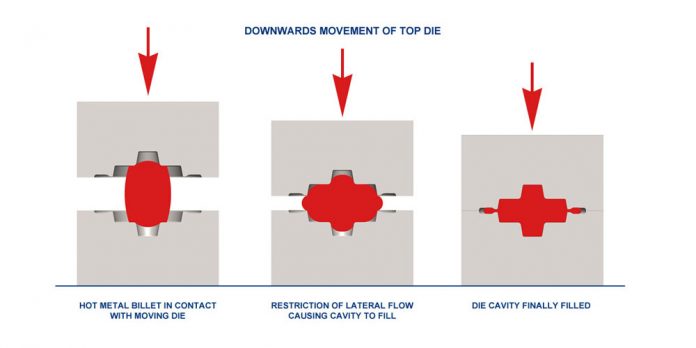Metalworking has been in existence for years, and the forging method is among the oldest manufacturing method used to form metals. The resultant metals are usually shaped differently and are stronger than machined ones. There are two types of forging processes; cold and hot forging, and both are further divided into sub-categories. The hot forging process is more common and involves heating metals at temperatures above their melting temperatures. It is also referred to as hot die forging as it consists of the use of dies like in the impression die forging process. The method involves equipment like presses, hammers, and others to form metals. In this extract, we discuss the hot forging process.
The steps taken during hot forging
Hot forging is essential for industrial applications such as automotive. The industries rely on forged parts due to their superior strength and reliability, especially during high pressure. Several steps must be followed to develop such products. They are;
1. Heating of the metal
At this stage, ingots which are metal blocks, are subjected to very high heating temperatures. The metal block is chosen depending on the part being made and its use. Different metals like steel and aluminum have varying characteristics and are used differently. The manufacturer uses different metals in varying sizes and shapes based on what he wants to produce. The ingots are heated but are not allowed to melt. They remain molten, having a bit of fluidity and their shapes remains the same. However, in this state, the metal block is malleable, and by using force, you can alter its shape easily.
2. Pre-forming
After heating, the ingot can be altered since it is soft and appears elastic. Before proceeding for die pressing., the shape must be changed to increase the surface being worked on. This is done through edging, which involves using a hammer or press. Both function the same way, so it is upto the manufacturer’s wants or their availability. After the working crosssection has been made larger, blocking takes place. Blocking is done to refine the appearance and shape of the metal block in readiness for the next step.
3. Complete forging
Here, the shape of the preformed metal is completed. The metal is placed between two dies and pressed to assume the shape of the final product. Different dies are used based on the simplicity or complexity of the objects. In addition, while in the impression of the two dies, some things are only pressed once, and the end product is evident while others need several strokes of different pressures to achieve the product.
4. Cooling process
Cooling enhances the strength of the resultant product. It is achieved when the grain flow of the metal is optimized and deformed. Since the metal is molten, the excess content flows out of the dies, cools, hardens, and becomes stronger than the metal inside. The metal between the dies is then forced to fill up the cavities.
5. Finishing
This stage involves trimming and treating the metal surface to make it accurate in terms of dimensions. It also prevents corrosion and enhances the metal’s appearance.
Conclusion
The hot forging process above is straightforward. It helps you understand briefly what happens during forging manufacturing to produce end products fir for various applications. It involves different metals based on the end object as well as dies and the pressure applied.














